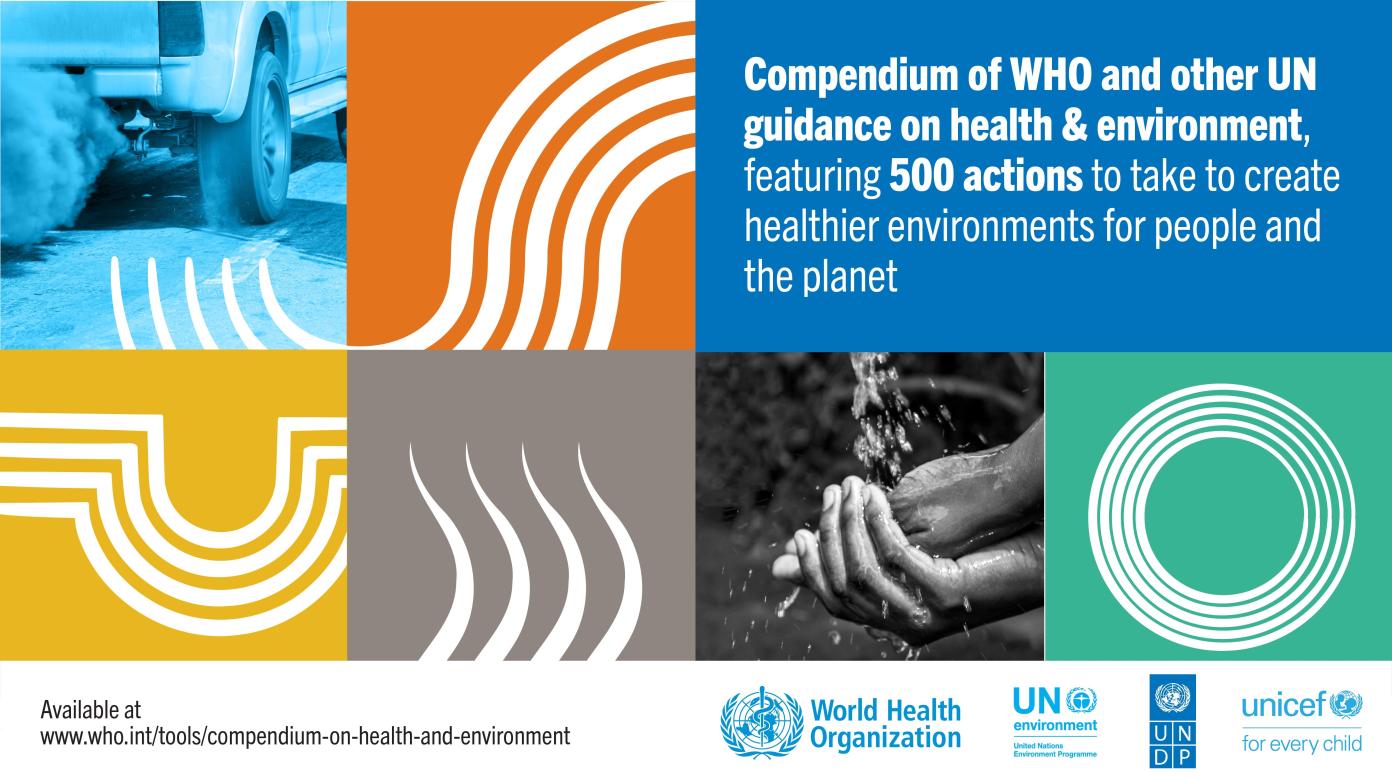“Events like record-breaking high temperatures in North America, massive flooding in Europe and China, and devastating wildfire seasons provide increasingly frequent, grim reminders that countries need to step up action to eliminate the health impacts of environmental risk factors,” said Dr Maria Neira, Director, Department of Environment, Climate Change and Health, at WHO. “Implementing the actions in the Compendium should be part of a healthy and green recovery from the COVID pandemic and beyond, and is essential to attaining the Sustainable Development Goals. The UN is uniting its health and environment expertise to support countries in this endeavour.”
The Compendium, which is accessible via interactive webpages on the WHO website and as a PDF for offline reference, also addresses priority settings for action, such as cities and urban settlements, as well as cross-cutting topics like vulnerable and marginalized populations including the poor, women and children. They also play an important role in achieving health equity, as low- and middle-income countries bear the greatest environmental burden in all types of diseases and injuries.
Two thirds of deaths attributed to environmental risk factors are from non-communicable diseases (NCDs), such as heart disease, stroke and cancer, making the actions in the Compendium a crucial part of addressing the NCD epidemic.
“Young children are especially vulnerable to environmental risks, which can affect their survival and lifelong health and well-being,” said Aboubacar Kampo, Director of Health Programmes at UNICEF. “Healthy environments are a prerequisite for healthy children. Our assessment indicates that it can prevent a range of life-threatening diseases and quite significantly, up to a quarter of deaths among children under five years of age. Furthermore, healthy environments work as preventative health care and help reduce unnecessary medical costs for families, enabling them to invest in socio-economic progress."
“Channelling investments into the actions that address the triple planetary crises of climate change, biodiversity loss and pollution, which have profound implications for health, is key. We must transform the way we value nature if we are to safeguard health and achieve the Sustainable Development Goals — a major shift that requires multi-sector, multi-agency efforts. This compendium, by making available key tools and methodologies developed by a broad range of development partners is an important step in this direction and in promoting positive environment and health outcomes,” said Monika MacDevette, Chief, Chemicals and Health Branch, UNEP.
The 500 actions that comprise the Compendium are drawn from each agencies’ extensive work in health and environmental development across the globe and are chosen for their relevance, accessibility and scalability.
Areas where UNDP is most engaged include guidance related to ways to reduce exposure to indoor and outdoor air pollution that cause multiple health problems including non-communicable diseases; strategies to address health risks linked with climate change such as heat stress, rising sea levels, and climate-sensitive diseases; ways to improve access to clean water, sanitation and hygiene services and clean energy; and advice related to links between biodiversity loss, infectious diseases, pandemics and nutrition security and diversity.
The Compendium also proposes ways for the health sector to reduce its carbon and toxic emissions and waste. It includes examples of UNDP’s work in these areas, such as the Sustainable Health in Procurement Project and support for the solarization of remote health facilities in low-income countries. Furthermore, it includes guidance on reducing the impacts of tobacco use and farming on health, environment and sustainable development[i], and provides ideas for action that can be taken to protect the biodiversity while preventing the emergence of new infectious diseases.
The Compendium is a “living” repository, subject to updates and new guidance as they become available from partner organizations. Each action in the Compendium is briefly described and refers to the source for greater detail.
[i] WHO FCTC and UNDP, 2017. Discussion paper. The WHO Framework Convention on Tobacco Control: An accelerator for Sustainable Development.

 Locations
Locations